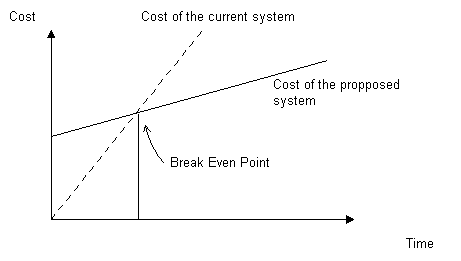| (a) | Give one example of each of the following: | |||||||||||||||||||||||||||||||||||||||||
| (i) Tangible costs. | [1] | |||||||||||||||||||||||||||||||||||||||||
| (ii) Intangible costs. | [1] | |||||||||||||||||||||||||||||||||||||||||
| (iii) Tangible benefits. | [1] | |||||||||||||||||||||||||||||||||||||||||
| (iv) Intangible benefits. | [1] | |||||||||||||||||||||||||||||||||||||||||
| (i) Tangible costs -
Furniture costs (ii) Intangible costs - Costs of maintenance of hardware (iii) Tangible benefits - Reduce the use of paper and paper wastage (iv) Intangible benefits - Increase customer satisfaction
|
||||||||||||||||||||||||||||||||||||||||||
| (b) | (i) One cost category associated with determining economic feasibility is annual operating costs. Describe two others. | [4] | ||||||||||||||||||||||||||||||||||||||||
| (ii) What is the equation for calculating annual operating costs? | [1] | |||||||||||||||||||||||||||||||||||||||||
| (iii) List four examples of annual operating costs. | [4] | |||||||||||||||||||||||||||||||||||||||||
| (iv) Given below is an example of the costs investigated after the preparation of a project proposal. Calculate the final annual cost based on the figures below. | [4] | |||||||||||||||||||||||||||||||||||||||||
|
||||||||||||||||||||||||||||||||||||||||||
| (i) Investment cost Investment cost is defined as non recurring capital outlay used to acquire and develop new software, equipment or facilities. Example : cost of software. Implementation cost (ii)
(iv)
= 17,000 + 7,000 + 52,500 The final annual cost based on the figures given is $54, 900
|
||||||||||||||||||||||||||||||||||||||||||
| (c) | Define with the use of a diagram, the term break-even analysis. | [3] | ||||||||||||||||||||||||||||||||||||||||
 Break-even
analysis is the point at which it become profitable for a proposed system to be
implemented.
|